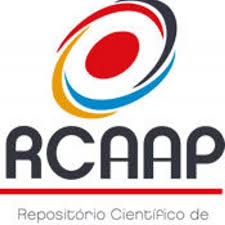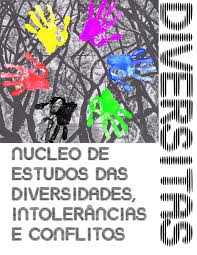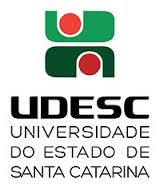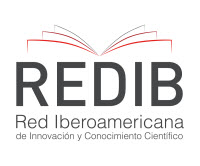Margaret Atwood and the re-invention of myth in the penelopiad.
Resumo
Com base nas relações transtextuais evidentes no próprio título da The Penelopiad de Margaret Atwood, esta pesquisa examina as características paratextuais, intertextuais, metatextuais, hipertextuais e arquitextuais das referidas relações com a Odisseia. O foco principal do trabalho é demonstrar como o conflito da autora com os códigos heroicos e com a natureza patriarcal do texto homérico a faz recriar a história de Penélope e de suas doze servas enforcadas a mando de Odisseu, tanto a partir do material épico como do mítico. Ao dar voz a Penélope, como narradora autodiegética, e ao coro das servas que comentam sua narrativa, cujas vozes condizem com nossa contemporaneidade, Atwood reorienta o horizonte de expectativa do leitor para uma nova perspectiva textual, genérica e crítica.
Résumé: En tenant compte des relations transtextuelles évidentes dans le titre de l’oeuvre The Penelopiad de Margaret Atwood, cette recherche examine les caractéristiques paratextuelles, intertextuelles, métatextuelles, hypertextuelles et architextuelles de ces relations avec l’Odyssée. L’argument central de l’article est de démontrer comment le conflit d’Atwood avec les codes héroïques et avec la nature patriarcale du texte homérique pousse l’auteur à recréer les histoires de Pénélope et de ses douze servantes pendues sous l’ordre d’Ulysse, à partir d’un contenu épique et mythique. En donnant voix à Pénélope comme narratrice autodiégétique, et au choeur des servantes qui commentent le récit de la reine, dont les voix s’accordent avec notre contemporanéité, Atwood reconduit l’horizon d’expectatives du lecteur à une nouvelle perspective textuelle, générique et critique.
Mots-clés: Margaret Atwood; The Penelopiad; intertextualité; mythe
Abstract: Based on the transtextual relationships apparent in the very title of Margaret Atwood’s work The Penelopiad, this article examines the paratextual, intertextual, metatextual, hypertextual and architextual characteristics of those relationships with The Odyssey. The main focus of the article is to demonstrate how Atwood’s conflict with the heroic codes and the patriarchal nature of the Homeric text makes her recreate the stories of Penelope and of her twelve hanged maids under Odysseus’ orders, based on epic as well as on mythic material. By giving voice to Penelope as an autodiegetic narrator, and to Margaret Atwood and the re-invention of myth in The Penelopiad 93 the chorus of maids who comment on the queen’s narrative, whose voices are in keeping with our contemporaneity, Atwood redirects the reader’s horizon of expectations towards a new textual, generic and critical perspective.
Keywords: Margaret Atwood; The Penelopiad; intertextuality; myth
Résumé: En tenant compte des relations transtextuelles évidentes dans le titre de l’oeuvre The Penelopiad de Margaret Atwood, cette recherche examine les caractéristiques paratextuelles, intertextuelles, métatextuelles, hypertextuelles et architextuelles de ces relations avec l’Odyssée. L’argument central de l’article est de démontrer comment le conflit d’Atwood avec les codes héroïques et avec la nature patriarcale du texte homérique pousse l’auteur à recréer les histoires de Pénélope et de ses douze servantes pendues sous l’ordre d’Ulysse, à partir d’un contenu épique et mythique. En donnant voix à Pénélope comme narratrice autodiégétique, et au choeur des servantes qui commentent le récit de la reine, dont les voix s’accordent avec notre contemporanéité, Atwood reconduit l’horizon d’expectatives du lecteur à une nouvelle perspective textuelle, générique et critique.
Mots-clés: Margaret Atwood; The Penelopiad; intertextualité; mythe
Abstract: Based on the transtextual relationships apparent in the very title of Margaret Atwood’s work The Penelopiad, this article examines the paratextual, intertextual, metatextual, hypertextual and architextual characteristics of those relationships with The Odyssey. The main focus of the article is to demonstrate how Atwood’s conflict with the heroic codes and the patriarchal nature of the Homeric text makes her recreate the stories of Penelope and of her twelve hanged maids under Odysseus’ orders, based on epic as well as on mythic material. By giving voice to Penelope as an autodiegetic narrator, and to Margaret Atwood and the re-invention of myth in The Penelopiad 93 the chorus of maids who comment on the queen’s narrative, whose voices are in keeping with our contemporaneity, Atwood redirects the reader’s horizon of expectations towards a new textual, generic and critical perspective.
Keywords: Margaret Atwood; The Penelopiad; intertextuality; myth
Palavras-chave
Margaret Atwood; The Penelopiad; intertextualidade; mito; Penelopiad; intertextuality
Texto completo:
PDFApontamentos
- Não há apontamentos.
ISSN eletrônico: 1984-5677
ISSN impresso: 1519-0994





















